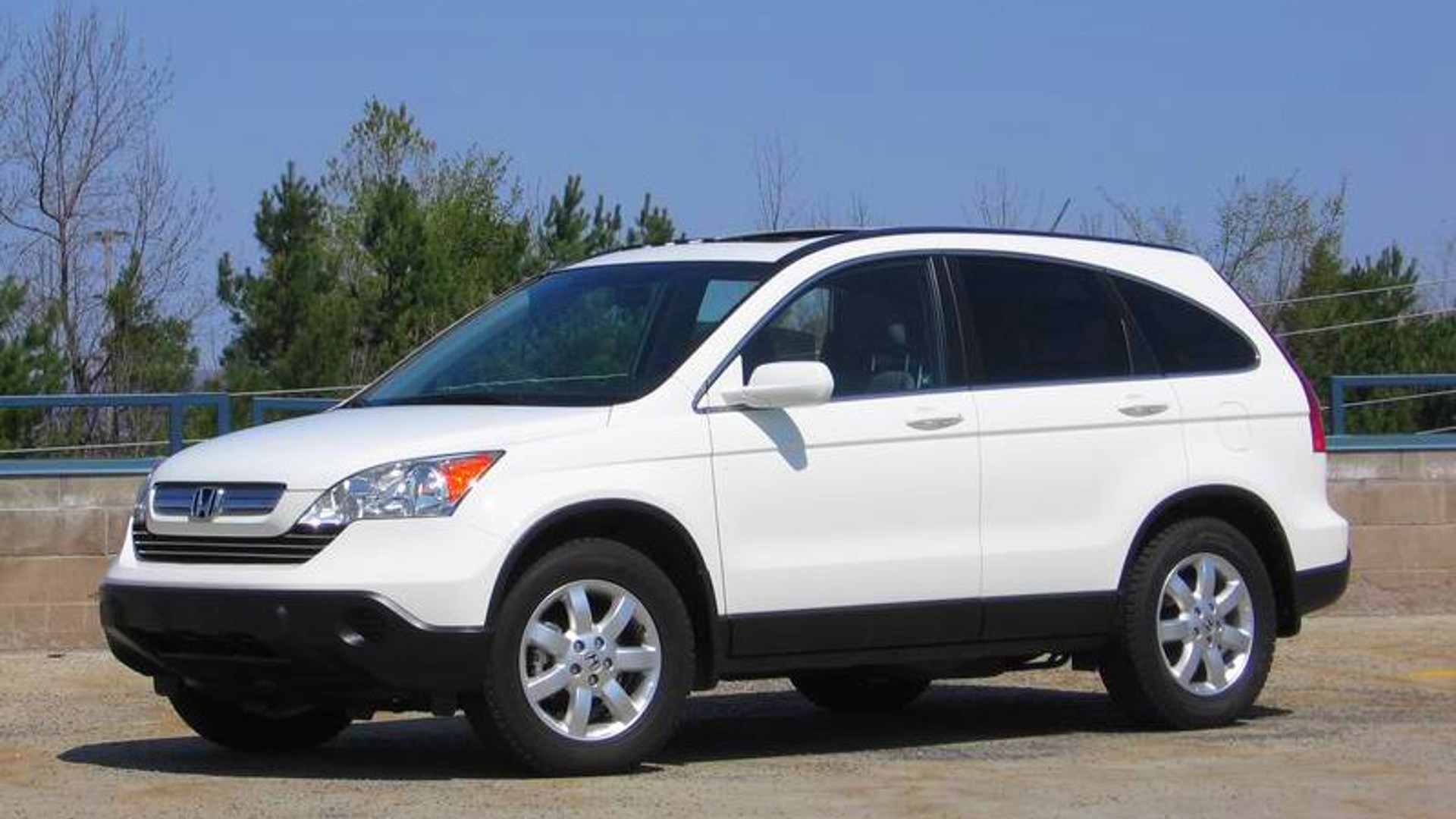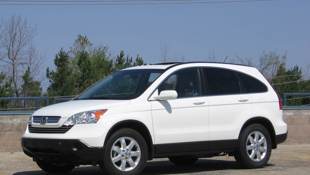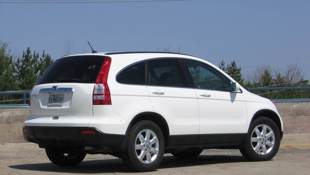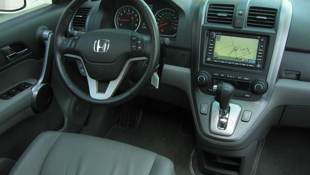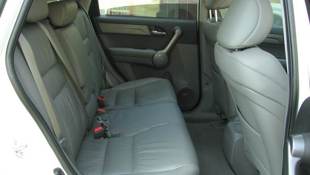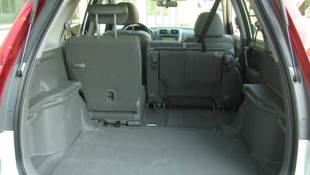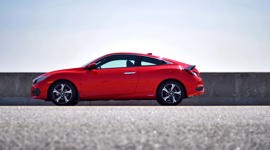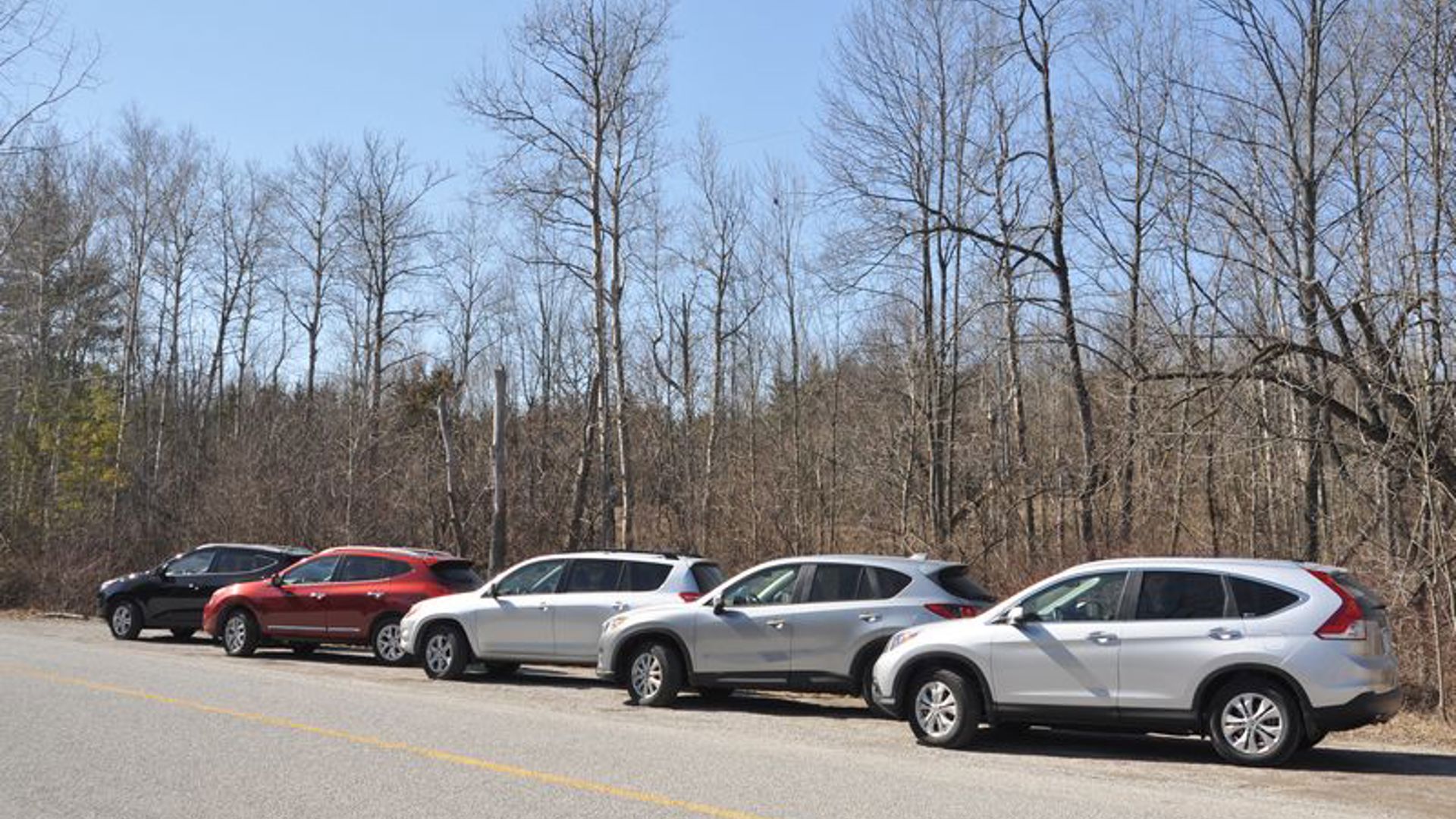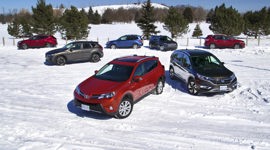Update by Justin Pritchard; original article by Chris Chase
High resale values and a continued reputation for no-nonsense, reliable performance have helped the last-generation Honda CR-V maintain a position as one of the most sought-after used crossover buys on the market today. With efficiency, flexibility and safety front and centre, the last complete CR-V generation is one of the most loved models in its segment.
High resale values and a continued reputation for no-nonsense, reliable performance have helped the last-generation Honda CR-V maintain a position as one of the most sought-after used crossover buys.
Look for the surprisingly spacious five-seat crossover with features like heated leather, a sunroof, navigation, Bluetooth, automatic climate control and available Real Time four-wheel drive. A five-speed automatic was included on all models. Note that CR-V’s naming convention saw lower-end models wearing the LX badge, while EX, EX-L and EX-L Navi models filled the lineup.
Look for a 2.4L four-cylinder with 166 hp in earlier models, that figure climbing to 180 later in this generation’s life.
Here’s a closer look at some common problems and issues identified by the owner community, with some more detailed information that’s emerged in recent years. We’ll also advise some checks that should be considered mandatory ahead of purchasing a used CR-V from this generation.
Have a mechanic inspect the CR-V’s brakes, ensuring they have plenty of life left. While the vehicle is in the air, said mechanic can also check the underside for signs of damage or fluid leakage.
Some owners have complained of oil consumption, and the problem is well documented in the owner community. Some amount of oil consumption is considered normal on virtually every vehicle, though test-drivers are advised to check the CR-V’s oil level and condition, before purchase, continue monitoring it religiously afterwards, and ensure the seller was fond of frequent, high-quality oil changes.
Be double sure that the CR-V you’re considering tracks straight and smooth down the road, and question any ‘pulling’ or vibration felt through the steering, which could be evidence of a front-end steering or suspension issue, or a sign of a bad alignment. A mechanic can diagnose and repair any problems like these in short order.
Triple check for proper operation of the locks and door handles on all doors and the hatchback as well. Also, note that the air conditioning system should blow ice-cold air almost instantly after it’s engaged. If that’s not the case, a bad AC compressor is likely the culprit.
A light, metallic rattle coming from beneath the vehicle is typically caused by a rusty or loose catalytic converter heat shield, which some owners simply remove to stop the noise. If you detect a sound like this, be sure to confirm that’s the case.
Ensure all fluid changes are up to date, and note that a whining noise during steering at low speeds could be caused by a worn-out power steering pump, or low power steering fluid level. If the fluid level is low, adding fluid will typically stop the noise. If the noise is present and the fluid level is normal, a new power steering pump may be in your future.
Ultimately, expensive driveline-related issues with the CR-V seem to be a non-issue in this generation. Problems are likely to be minor, and owners of a well-maintained used model can expect reliable operation – and a used crossover price premium in exchange for it.
The Honda CR-V entered its third generation in 2007, a year that brought many changes to one of the most popular small SUVs in its crowded segment.
While the first two versions were similar in their long-legged, tall-riding appearance, the 2007 CR-V got a more substantial look that was less conventional, yet bore a stronger resemblance to the larger Pilot. This was the first CR-V to be built outside of Japan, with some North American-market models built in Ohio. The manual transmission was gone, making the five-speed automatic that was once optional the only transmission offered; as well, a new front-wheel drive model was added to the line-up. Honda designers also opted to move the spare tire from its previous spot on the tailgate to a new home under the cargo floor.
Many questioned Honda's decision to stick exclusively with four-cylinder power for the CR-V, while most of its competitors had long offered the option of a V6 or a turbocharged four. Honda's marketing department countered by saying that CR-V buyers felt that four cylinders was enough.
The 2.4-litre engine made 166 horsepower and 161 lb-ft of torque, and was mated to a five-speed automatic transmission. The base LX was the only one that could be had with front-wheel drive, and all-wheel drive was an option there.
In 2009, Honda added an EX FWD model, making the top-trim EX-L as the only one to come exclusively with AWD.
The 2010 model got updated styling and a power boost that ramped horsepower up to 180, but left the torque figure unchanged.
In its first year, the third-gen CR-V's fuel consumption figures were 10.2/7.3 L/100 km (city/highway) in FWD trim, and 10.7/7.8 L/100 km with all-wheel drive. Those figures improved to 9.8/7.1 (FWD) and 10.1/7.5 (AWD) with 2010's updated motor.
Consumer Reports names the CR-V in its list of “good bet” recommended used vehicles, and gives the Honda very positive reliability ratings in most categories, but the CR-V is not without reproach.
The rear differential is a known source of trouble, and failures appear to be linked to a too-long lubricant change interval, and/or the use of an improper lubricant at the factory. The problem apparently only affects (or mostly affects) CR-Vs built in Japan. Read about it here and here and here. Changing the fluid is a DIY-friendly job; click here for a great how-to. If you want to determine where a particular CR-V was built, click here for a guide to deciphering Honda's VIN codes.
Older CR-Vs are known for an air conditioning flaw owners call "black death." The A/C compressor fails slowly and in the process, according to this New York Times article, pumps debris through the innards of the air conditioning system in the form of a black sludge. The third-generation CR-V supposedly uses a different compressor design, but there are indications that it too is susceptible to "black death." Another thing to be aware of is that in 2007-and-newer CR-Vs, an air conditioning compressor relay is a common trouble spot. Thankfully, this is a simple, and relatively inexpensive, repair that most owners can make on their own.
A number of 2010 CR-V owners posting here complain of vehicles that hesitate when acceleration is called for and generally feel sluggish despite the added horsepower 2010 models benefit from. The cause, as one owner discovered, was an engine control unit (ECU) that was misinterpreting sensor data and consequently retarding ignition timing. The fix was a reflash of the ECU that, according to the creator of the thread linked above, cured the problem 100 per cent.
A different bunch of 2010 owners posting here complain of an annoying power steering noise. There's not enough evidence to suggest that the CR-V's power steering is a trouble spot, but one poster, a Honda technician in the Toronto area, said that his dealership had replaced about a dozen 2007-2010 CR-V power steering racks in the spring and summer of 2010.
Here you'll find discussion surrounding complaints of rust and poor paint quality on third-gen CR-Vs.
While it's not a reliability concern, there are a few threads at CRVOwnersClub.com about poor windshield wiper performance. Click here and here to see a couple of them.
The CR-V is popular for a reason, and there's a good chance you'll come away from a test drive impressed with its generally pleasant driving demeanour. And while Consumer Reports loves the CR-V to death, don't buy one without getting it checked over by a trustworthy mechanic, paying particular attention to the state of the rear differential (in AWD models) and the power steering system.
Transport Canada Recall Number: 2011013; Units affected: 12010
On certain vehicles, a connector pin inside the engine wiring harness may have damaged by a testing tool during vehicle assembly. This could cause a loss of power to the ignition coils, resulting in intermittent spark firing or engine stalling. Engine stalling would result in lost propulsion which, in conjunction with traffic and road conditions, and the driver's reactions, could increase the risk of a crash causing property damage and/or personal injury. Correction: Dealers will replace the damaged connector pin within the ignition wiring harness coupler. In addition, the central coupler (bus bar) that the ignition wiring harness attaches to will be replaced, in case it has incurred damage by the connector pin.
